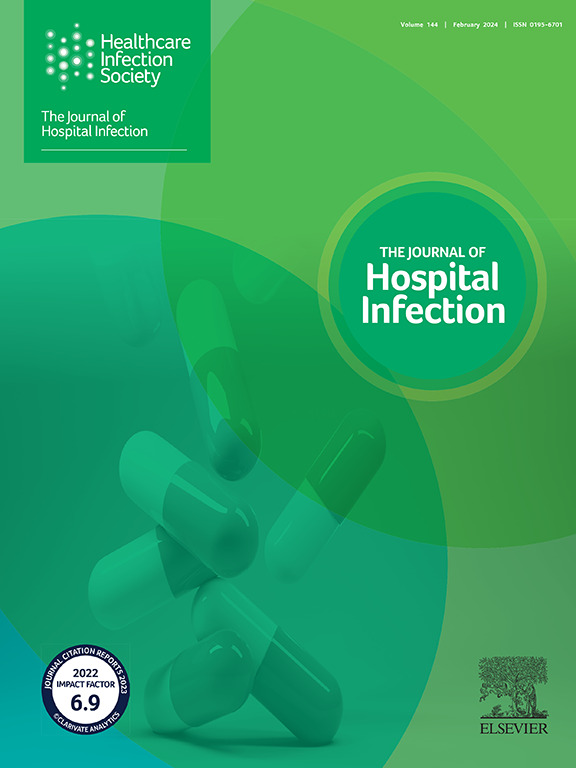产碳青霉烯酶革兰氏阴性携带者随访策略的差异性:来自一项国际范围调查的结果。
IF 3.1
3区 医学
Q1 INFECTIOUS DISEASES
引用次数: 0
摘要
背景:为了安全地停止感染预防和控制措施,需要采取后续策略以确认多药耐药细菌携带丢失。目前还没有基于证据的标准来确定产生碳青霉烯酶的革兰氏阴性菌(CPGN)的携带者何时可以被认为是无载体。目的:本研究评估了目前用于已知CPGN携带者的随访策略。方法:我们通过ESCMID研究组ESGNI发起了一项在线调查,以评估产碳青霉烯酶肠杆菌(CPE)、鲍曼不动杆菌(CPAB)和铜绿假单胞菌(CPPA)的随访策略,时间为2023年10月至2024年2月。调查包括49个问题,涉及随访策略、不筛查标准和流产损失。被动随访被定义为在有前瞻性计划的情况下进行筛查。进行描述性分析。结果:来自21个欧洲国家和6个非欧洲国家的134名受访者完成了调查。CPE的随访率超过80%,CPAB和CPPA的随访率分别为66.4%和60.4%,其中被动随访率最高。被动随访多在携带者刚入院时进行。84-92%的患者在首次发现后4个月内开始积极随访。连续阴性筛查和离最后一次检测的间隔时间是最常报道的确认携带丢失的标准。然而,对于20-35%的流产没有标准。结论:对CPGN携带者的随访尚无共识。在决定何时停止预防措施时,迫切需要循证战略或达成共识。本文章由计算机程序翻译,如有差异,请以英文原文为准。
Variability in follow-up strategies for carbapenemase-producing Gram-negative carriers: results from an international scoping survey
Background
Follow-up strategies to confirm loss of carriage of multidrug-resistant bacteria are needed to safely discontinue infection prevention and control measures. There are currently no evidence-based criteria to determine when a carrier of carbapenemase-producing Gram-negative bacteria (CPGN) can be considered free of carriage.
Aim
This study assessed follow-up strategies currently used for known CPGN carriers.
Methods
An online survey was launched via the European Society of Clinical Microbiology and Infectious Diseases (ESCMID) Study Group for Nosocomial Infections (ESGNI) to assess follow-up strategies for carbapenemase-producing Enterobacterales (CPE), Acinetobacter baumannii (CPAB), and Pseudomonas aeruginosa (CPPA), from October 2023 to February 2024. The survey consisted of 49 questions concerning follow-up strategies, and criteria for not screening and loss of carriage. Passive follow-up was defined as screening on occasions whereas active follow-up was prospectively planned. Descriptive analyses were performed.
Findings
One hundred and thirty-four respondents from 21 European and six non-European countries completed the survey. For CPE, more than 80% performed some kind of follow-up whereas 66.4% and 60.4% did so for CPAB and CPPA, respectively, with passive follow-up being most frequent. Passive follow-up was mostly performed when the carrier was newly admitted to hospital. Active follow-up was started within four months after first detection in 84–92%. Both consecutive negative screens and the interval from last detection were the most commonly reported criteria for confirming loss of carriage. However, there were no criteria for loss of carriage in 20–35%.
Conclusion
There is no consensus on the follow-up of CPGN carriers. Evidence-based strategies or consensus are urgently needed to decide when to stop preventive measures.
求助全文
通过发布文献求助,成功后即可免费获取论文全文。
去求助
来源期刊

Journal of Hospital Infection
医学-传染病学
CiteScore
12.70
自引率
5.80%
发文量
271
审稿时长
19 days
期刊介绍:
The Journal of Hospital Infection is the editorially independent scientific publication of the Healthcare Infection Society. The aim of the Journal is to publish high quality research and information relating to infection prevention and control that is relevant to an international audience.
The Journal welcomes submissions that relate to all aspects of infection prevention and control in healthcare settings. This includes submissions that:
provide new insight into the epidemiology, surveillance, or prevention and control of healthcare-associated infections and antimicrobial resistance in healthcare settings;
provide new insight into cleaning, disinfection and decontamination;
provide new insight into the design of healthcare premises;
describe novel aspects of outbreaks of infection;
throw light on techniques for effective antimicrobial stewardship;
describe novel techniques (laboratory-based or point of care) for the detection of infection or antimicrobial resistance in the healthcare setting, particularly if these can be used to facilitate infection prevention and control;
improve understanding of the motivations of safe healthcare behaviour, or describe techniques for achieving behavioural and cultural change;
improve understanding of the use of IT systems in infection surveillance and prevention and control.
 求助内容:
求助内容: 应助结果提醒方式:
应助结果提醒方式:


